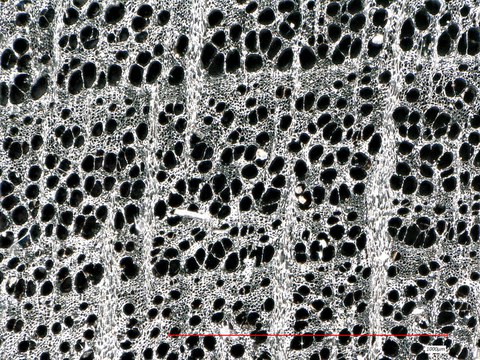Tree-ring research
Tree rings provide a unique historical archive that is valuable for addressing research questions across disciplines, from archaeology to ecology. In tree-ring research, also known as dendrochronology (from Greek: dendron = wood, chronos = time, logos = the study of), we make use of the fact that trees record environmental changes in their ring structure. For example, tree-ring width varies from year to year depending on environmental conditions and disturbances.
At the DendroLab, we primarily use the tree-ring archive to study how diverse environmental processes and conditions affect tree growth and vitality. The insights gained are crucial for assessing how future forests may respond to global change and how forest management can mitigate potential negative impacts. Analyses of historical wood and charcoal remains further provide information on past tree species composition, human use, and tree growth.

Historic charcoal, Fagus sylvatica L. (200x magnification)
